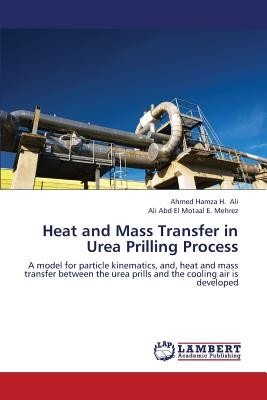
- We will send in 10–14 business days.
- Author: Ali Ahmed
- Publisher: LAP Lambert Academic Publishing
- ISBN-10: 3659345067
- ISBN-13: 9783659345067
- Format: 15.2 x 22.9 x 0.7 cm, softcover
- Language: English
- SAVE -10% with code: EXTRA
Reviews
Description
Urea prills are produced in the prilling tower, where a cooling-solidification-cooling process of the prills takes place. The ambient air is used as the cooling stream for this process. A case study of the urea prilling process is chosen due to in hot/humid days, the temperature of the product at the bottom of the prilling tower is hot and cannot be packed directly. In addition, the urea prills form lumps and cakes with each other on the scrubber at the bottom of the prilling tower that affects the quality of the product. A mathematical model based on the particle kinematics, and, heat and mass transfer between the urea prills and the cooling air is developed. This is followed by using a numerical technique with an explicit scheme to solve the model. The model numerical results are validated with Scanning Electronic Microscope (SEM) observation of urea particles. Moreover, to investigate the effect of the urea prilling tower configuration parameters on the above urea product problems, the hydrodynamic of air flow inside the tower is analyzed using Computational Fluid Dynamics (CFD) simulation software.
EXTRA 10 % discount with code: EXTRA
The promotion ends in 20d.18:43:54
The discount code is valid when purchasing from 10 €. Discounts do not stack.
- Author: Ali Ahmed
- Publisher: LAP Lambert Academic Publishing
- ISBN-10: 3659345067
- ISBN-13: 9783659345067
- Format: 15.2 x 22.9 x 0.7 cm, softcover
- Language: English English
Urea prills are produced in the prilling tower, where a cooling-solidification-cooling process of the prills takes place. The ambient air is used as the cooling stream for this process. A case study of the urea prilling process is chosen due to in hot/humid days, the temperature of the product at the bottom of the prilling tower is hot and cannot be packed directly. In addition, the urea prills form lumps and cakes with each other on the scrubber at the bottom of the prilling tower that affects the quality of the product. A mathematical model based on the particle kinematics, and, heat and mass transfer between the urea prills and the cooling air is developed. This is followed by using a numerical technique with an explicit scheme to solve the model. The model numerical results are validated with Scanning Electronic Microscope (SEM) observation of urea particles. Moreover, to investigate the effect of the urea prilling tower configuration parameters on the above urea product problems, the hydrodynamic of air flow inside the tower is analyzed using Computational Fluid Dynamics (CFD) simulation software.


Reviews